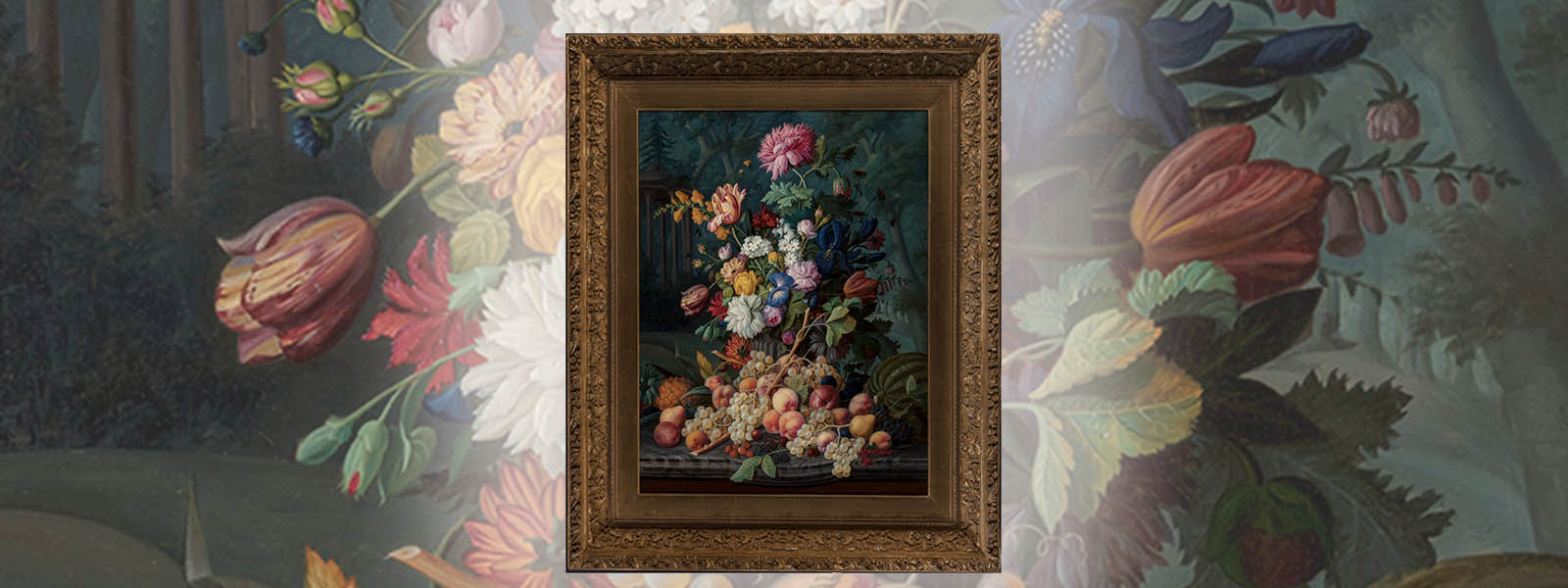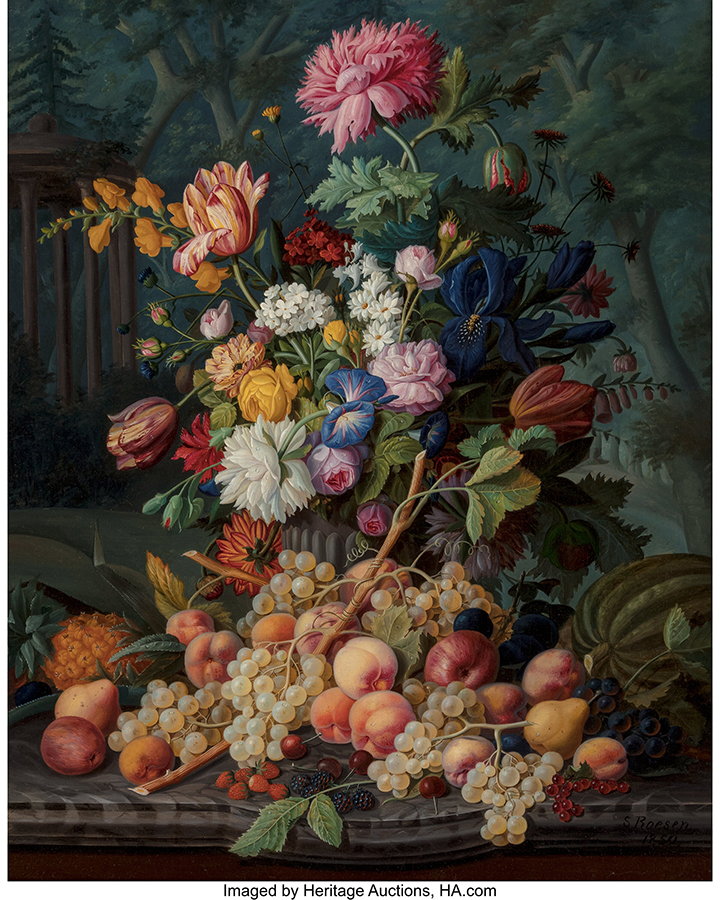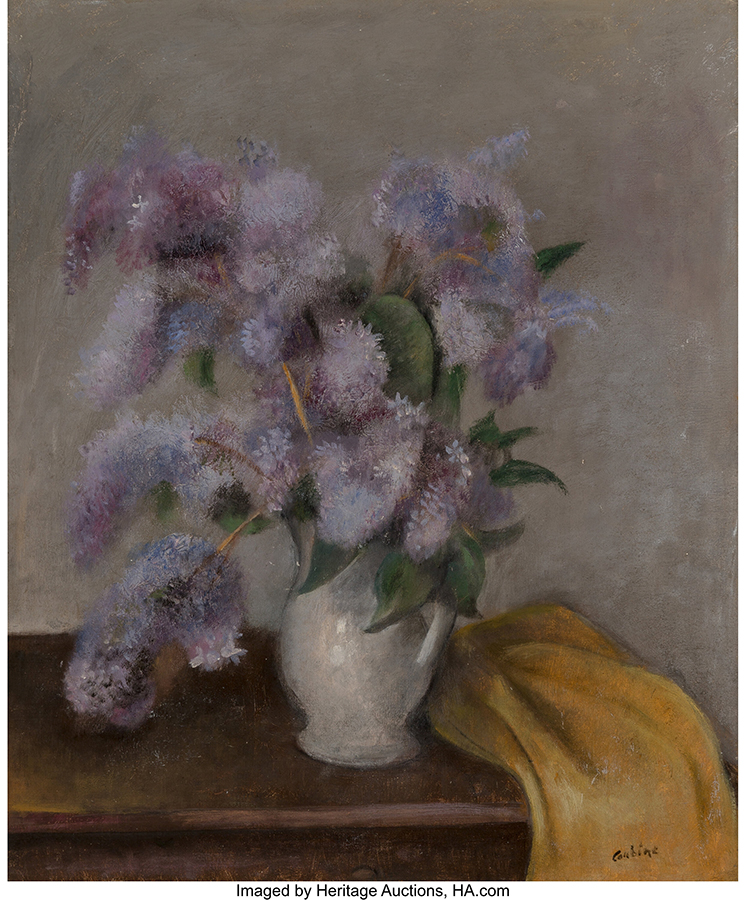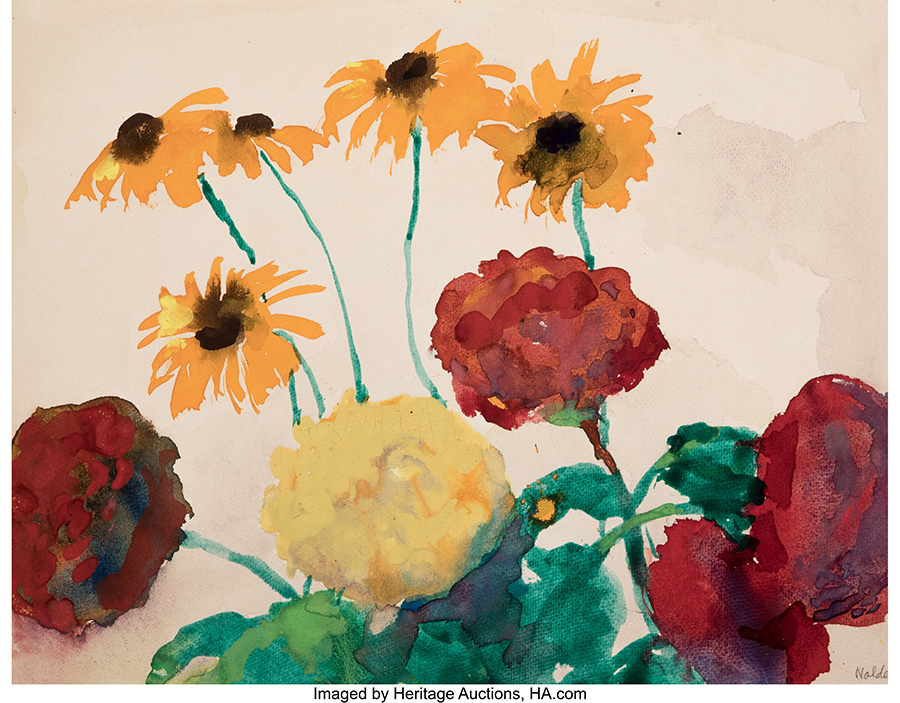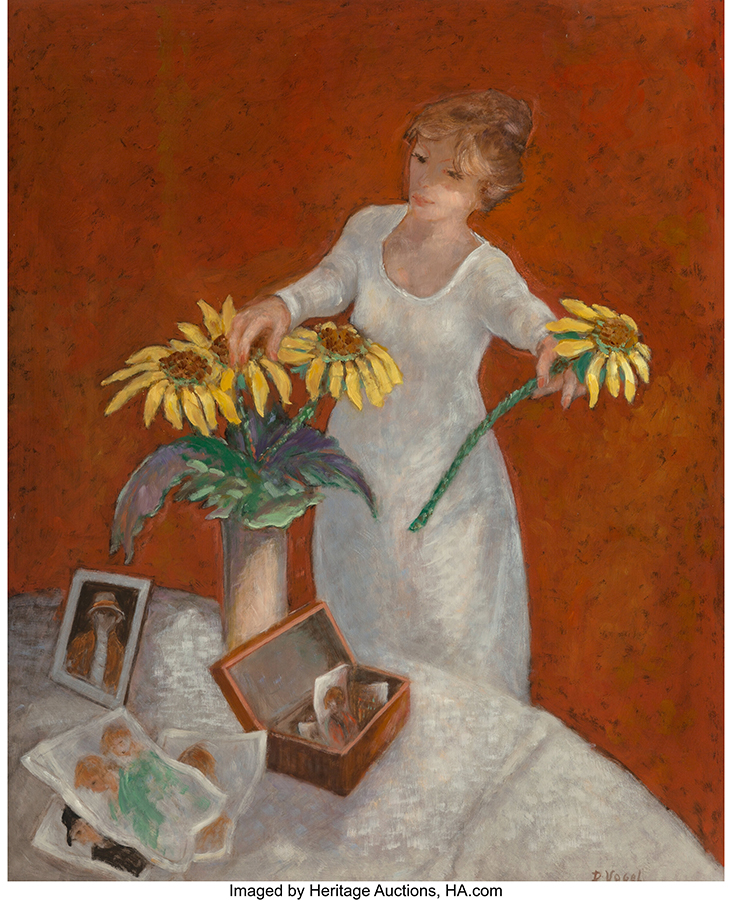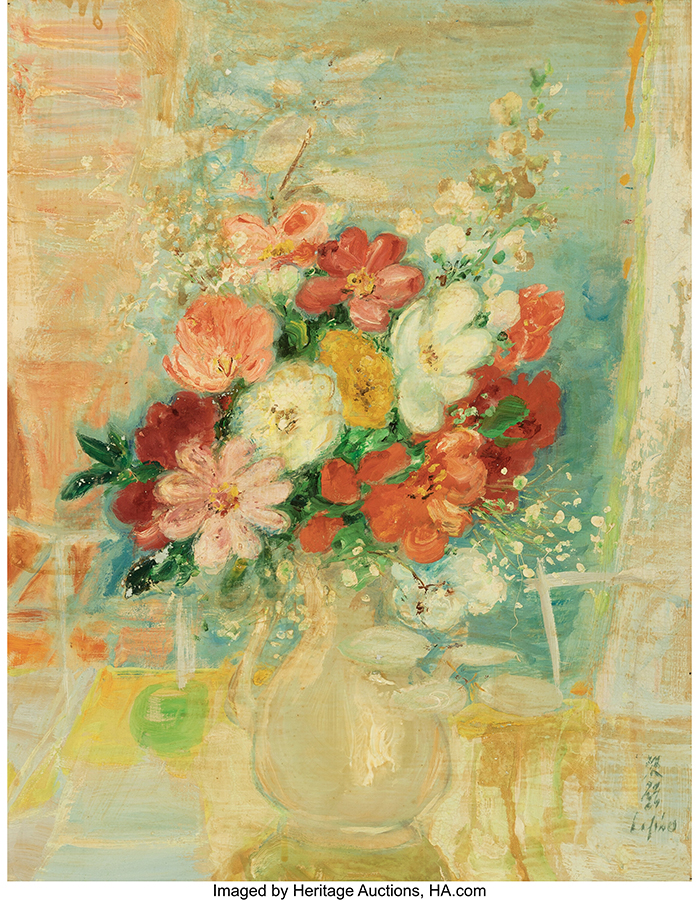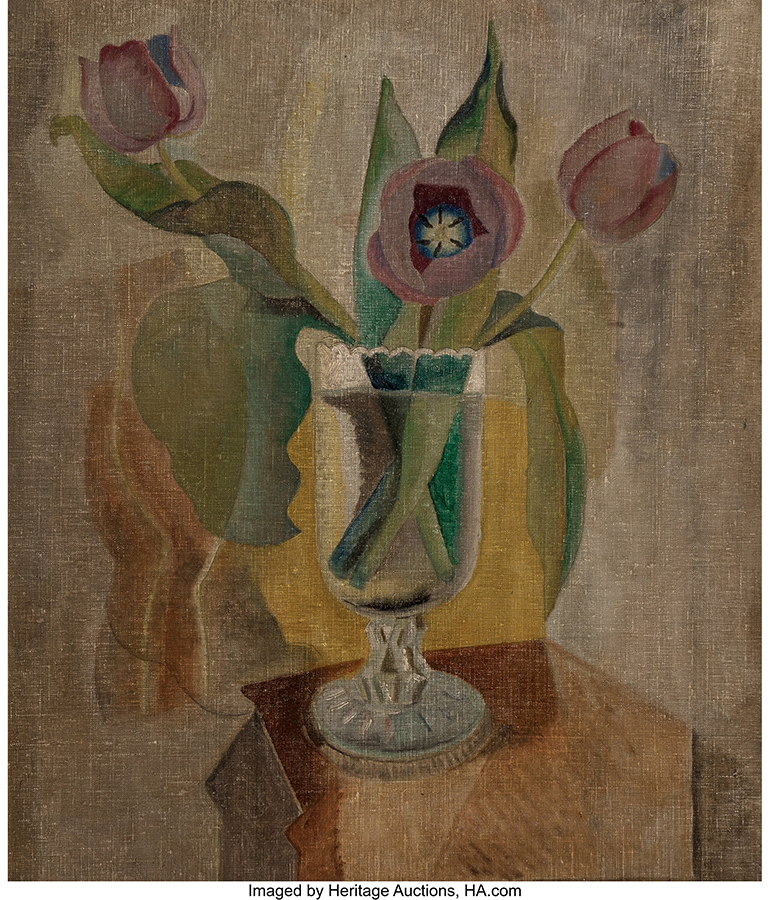UPCOMING AUCTIONS OFFER A BEVY OF BLOSSOMS TO BID ON THIS MONTH
Spring has sprung, and flowers are in bloom everywhere you look – including at Heritage Auctions. From lilacs and peonies to sunflowers and dahlias, colorful blossoms abound in our upcoming art events. Here, Heritage’s art experts open up about some of the wonderful posy-filled paintings just waiting to be picked.
Still Life with Fruit and Flowers in a Landscape, 1850
“This work is hands down one of the finest, if not the finest, Severin Roesen still lifes to come to market. Opulent, majestic and strikingly theatrical, Still Life with Fruit and Flowers in a Landscape is a superlative example of 19th-century still-life painting and an exceedingly important work in the history of American art. Roesen, one of America’s preeminent early still-life painters, created this masterwork in 1850, only two years after he arrived in the United States from Germany. Having descended through a single family since its original purchase directly from the artist, Still Life with Fruit and Flowers hung for generations in the family’s estate in New Jersey, built around 1880 along the Navesink River.” –Ariana Hartsock, Director, Fine Art, Dallas
Auction: American Art Signature® Auction, May 10
Bouquet of Lilacs in a Vase, 1929
“Otakar Kubin – or Othon Coubine, as he was known in France – was an internationally recognized Czech painter whose style bridged Impressionism and Post-Impressionism. Influenced by the work of Vincent van Gogh and Paul Gauguin, and a friend of Picasso, Coubine painted landscapes, figures and, notably, still lifes of flowers. The present work, featuring a centralized vase full of lilacs, is a fine example of his quiet style of flower painting. Using subtle silver-gray-lavender harmonies, Coubine evoked a shimmer of atmosphere around his bunch of lilacs – a signature effect highly admired in his florals.” –Marianne Berardi, Senior Specialist, European and American Art
Auction: European Art Signature® Auction, June 3
Bauernrosen und Rudbeckien, 1950
“Being in the midst of springtime, many of us are contemplating the breadth of our green thumbs. One person who never had any doubts was Emil Nolde, who often helped his mother in the garden on the family farm. While married to his first wife, Ada Vilstrup, he painted pictures of flowers and gardens inspired by the home they shared on the island of Alsen in the Baltic Sea. As Nolde’s career grew, so did his gardens. He would build a lavish and idiosyncratic garden at his next residence in Seebüll, where he resided till his passing in 1956. In this particular work, Nolde – who always found color to be his proper means of expression – painted vigorous red and yellow peonies, which were common of his works from 1945 to 1951.” –Frank Hettig, Vice President, Modern and Contemporary Art
Auction: Modern & Contemporary Art Signature® Auction, May 19
Sunflowers
“Donald Vogel moved to Dallas in 1942 and had his first solo exhibition at the Dallas Museum of Fine Arts the following year. A popular painter, he is also well known for establishing the Valley House Gallery and Sculpture Garden, which is still run by the Vogel family today. He called his mature works, like Sunflowers, ‘personal inventions.’ Through his paintings, Vogel hoped to ‘establish a gentle intimacy between [himself] and those who wished to involve themselves.’ This philosophy aligns his paintings with the French painters of the early 20th century called Les Nabis (The Prophets), whose ‘intimate poetry of everyday life’ Vogel brought to Texas.” –Atlee Phillips, Director, Texas Art
Auction: Texas Art Signature® Auction, May 21
Les Dahlias
“This beautiful painting by Le Pho brings a breath of spring to Heritage Auctions. The work comes from the estate of Katherine Doyle Carani, a Chicago-area collector. J. Robert Doyle, her first husband, was a businessman with offices in Chicago, Los Angeles and New York and was a founder and chairman of NASD. In the 1960s, the Doyles saw this painting at the Wally Findlay Gallery in New York – the gallery credited with introducing the artist’s work to the U.S. market – and it has been in the family ever since. Le Pho was heavily influenced by French masters Odilon Redon and Pierre Bonnard, and the artist’s signature is a skillful blend of traditional Chinese-style painting with Impressionism and Surrealism. Work by Le Pho is highly sought after, and the market is both international and very strong.” –Roberta Kramer, Vice President and Managing Director, Chicago
Auction: Modern & Contemporary Art Signature® Auction, May 19
Still Life with Flowers, 1922
“I have always loved Marguerite Zorach, not only for her abundant talents as a Modernist and a muse to her artist husband, William, but for her ability to carve out a niche for herself as an artist in a man’s world. From the start of her career, Marguerite stood somewhat apart from the rest of the American Modernist crowd in several ways, all of which gave her a certain freedom of artistic approach and her brand of Modernism a less derivative appearance. She was a woman from a highly educated, affluent family (her father was a lawyer for the Napa vineyards) who provided her with educational and other opportunities (such as travel). She was from California rather than the East Coast. She was fluent in French and German, and was one of the few women accepted at Stanford University before she dropped out to go to Paris to study art. In Paris, she elected (despite her grasp of French) to study at the more progressive Académie de la Palette, where classes were taught in English, rather than at one of the more traditional art schools. Notably, at La Palette, one of her primary instructors was a non-Frenchman, the Scottish Colorist John Duncan Fergusson, who embraced Fauvism early and encouraged his students to experiment rather than follow a strict course of study. She had an important entrée into French cultural society through her Aunt Addie (Harriet Adelaide Harris), who introduced her to such luminaries as Picasso, the Steins, Zadkine and Jean Cocteau, and also took her on a seven-month trip around the world, through Egypt, Palestine, India, Burma, Malaysia, Indonesia, China, Korea and Japan – in part to try and separate her from William Zorach, the American from Cleveland with whom she had fallen in love at La Palette. (It didn’t work; the couple married in 1912 and formed a lasting personal and artistic partnership.) This particular work resonates because it is so thoroughly modern and inherently feminine all at once.” –Aviva Lehmann, Senior Vice President, American Art
Auction: American Art Signature® Auction, May 10

